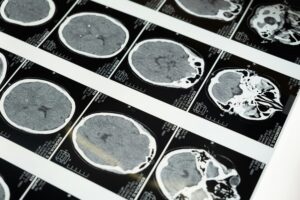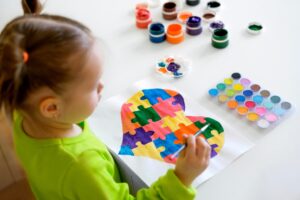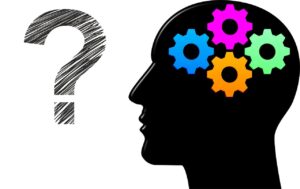
Experimental methods: how to create a successful study
Various rules govern every science and it uses different experimental methods. It does so in order to achieve the results. These results have to be able to be ready for publishing in scientific articles. In order to come up with a successful, publishable material a researcher needs to follow specific guidelines. He needs to arrange the experiments in an understandable, easily replicable way. Every future experiment needs to be able to replicate an already published scientific one. Without this ability to replicate, we couldn’t know whether the experiments are valid and transferable to a bigger population. Scientists need to have a clear view of all the guidelines in their mind before beginning a project.

Researchers need to have as much control as possible over all of the variables. They need to try and avoid confounding. Striving for objectivity and clearness in every step of the way is the goal of science. There is no worse thing for a scientist to miss a significant contributing factor to their study. This is due to the fact that this factor could have been able to change the results greatly.
If that happens, in a lot of cases, the research will have to start again. If you are lucky, maybe re-doing one or two experiments will be enough. In many cases, the scientist needs to run the entire set of experiments again. He does that in order to reach statistical significance with the results. Re-gathering all of the data again can sometimes turn research into a walking living nightmare!
Can you imagine running 200 infant participants between the ages of 5-7 months? And then you find out that the entire design of your study is faulty and you need to start over? You will have to rethink the entire design again but also recruit the 200 infants of the required age again! That is the reason why research takes time, patience, serious dedication and on occasion job stress.
In order to prevent these types of mashups, scientists have created guidelines and sets of rules. They aim to help speed the process along and make sure that it is running smoothly.
Experiments – the key to success in experimental methods
As mentioned before, an important part of every scientific study is the experiment itself. An experiment has certain prerequisites. A scientist needs to formulate a clear and concise hypothesis and the objectives of the study.
The hypothesis predicts what your study is attempting to find – the result of the study itself. It’s a statement. There are two different types of hypotheses in research.
- The null hypothesis states that the two variables that you are studying do not have a relationship. That means that one of them does not affect the other in any way, shape or form.
- Alternative hypothesis states the variables you are studying have a relationship and do affect one another. They do so in a significant fashion.
Experimental methods for every experiment include a set of variables that will help to formulate that hypothesis. The two sets of variables include an independent and a dependent variable. Independent variable is the one that the scientist manipulates. The dependent variable is the one that the scientist is trying to find out. The researcher needs to also control for confounding or extraneous variables. These variables can compromise the results of their study.
Experimental methods: Hypothesis example
Let’s try to create a hypothesis ourselves. We can have a theory that video game players have better reflexes compared to non-video game players. That is an alternative hypothesis that tries to predict whether video games have an effect on reflexes in human participants. The independent variable, in this case, would be the video games themselves. The dependent variable is the speed of the reflexes.
Now, we need to take into an account the confounding and extraneous variables. For example, there are many video games in this world. Is there a difference, let’s say, between strategy and action games? We further define our hypothesis saying that action video game players will have better reflexes compared to non-video game players.
Extraneous variables
Other extraneous variables come to mind. If we do find an effect, is there a subsequent gender difference or an age difference? That could potentially lead to a new series of experiments. In the first experiment, we test whether video game players have better reflexes than non-players. In the second experiment, we compare male and female video game players. We try to eliminate the possibility for gender to be a confounding variable. In the third experiment, we could compare adults to teenagers.
We can see how a simple question can turn into a lengthy study with many different participants and variables. This is by no means a well-thought out hypothesis. If we were to spend some more time on it, we’d probably find more variables that we need to control for. We’d find ourselves in front of at least four or five different experiments with the use of many experimental methods.
The experiments themselves can be classified into different categories.
Experimental methods categories

Experimental methods: Experiments
Experimental methods: Field experiments
These types of experiments happen in participant’s real life situation. The scientist here will manage the independent variable but in a setting outside of the laboratory environment.
There are certain advantages to field experiments. Due to the setting being realistic the participants will behave in a more normal and ordinary way than they would in a laboratory. This brings higher ecological validity to the experiment compared to a lab experiment.
- Ecological validity: how can the outcome of your study apply to real life?
Due to the fact that the participants usually do not know that they are being studied, they will not change their behavior subconsciously or consciously. Participants tend to do that when they think they know the purpose of the study that the researcher is conducting. That can seriously compromise the results of any experiment due to them not being genuine and create outliers in the further statistical analysis.
Experimental methods: Drawbacks of field experiments
We can see some challenges this set of experiments can produce due to the inability of the experimenter to control the confounding and extraneous variables that will for sure appear on the horizon during the study. Due to the inability to control for extraneous variables, there is a lesser likelihood to replicate the study which could be quite damaging for the project overall.
Experimental methods: Quasi/Natural experiments
The main difference between ‘Natural experiments’ and ‘Field experiments’ is that in the first one the scientist has no control over any variables that occur during the experiment. Because the experiment occurs in even more real-life settings than the field experiment, the participants are a lot more likely to act genuinely and naturally. This is one of the main strengths of these type of experiments. The ecological validity of them is quite high when compared to laboratory experiments and, even, field experiments. Because the participants do not know about the study or they might not suspect they are being studied, they will not try to subconsciously or consciously sabotage the results of the study which is a huge advantage in itself.
Experimental methods: Drawbacks of quasi/natural experiments
The scientist can go virtually anywhere and observe any situation. A big and obvious limitation of these types of experiments is the serious lack of control over any variables so it is either very difficult or sometimes virtually impossible for a future researcher to conduct a study in a similar way.
Experimental methods: Laboratory experiments
Laboratory experiments are the most controlled ones out of the three and they can use a variety of experimental methods for data collection due to the fact that they are the most objective ones. They allow the scientist to measure things and control for everything that he can possibly control for due to the fact that the researcher himself decides the place of the experiment, the time, the participants and the circumstances.
Participants: Random assignment
Usually, for the best outcome, the researchers try to get a random assignment of the participants to avoid a bias of only picking females over the age of 35 of higher-middle class. That would be quite a significant confounding variable that would surely compromise the results of any study. Sometimes, however, a certain population needs to be used, for example, if the scientists are testing a new drug for schizophrenia. Clearly, the participants of that study would have to have been diagnosed with schizophrenia beforehand.
Drawbacks of laboratory experiments
Laboratory experiments are easily replicable due to the fact that everything that happens in the experiment needs to follow a concise step-by-step procedure that the researcher will then share in his methods section. Avoidance of the extraneous variables becomes easier due to this controlled environment. A big limitation of laboratory controlled experiments in the field of psychology is the control itself.Due to the fact that many studies in psychology deal with human participants, the artificial environment may encourage the participants to act in a way that is not genuine or normal for them. On top of that, the participants usually know that they are a part of the experiment and, therefore, might subconsciously or consciously sabotage the results.
Experimental methods: Data collection
There are various different experimental methods of collecting data and two different types of data can be distinguished.
Experimental methods: Two types of data
Qualitative data is mainly a part of an exploratory research. It is less objective than quantitative data. Some common types of qualitative analysis include interviews, focus groups, participation/observation and case studies. In case studies, in particular, researchers are able to look into one specific problem or one particular participant that is of their interest.
Quantitative data usually generates data that is numerical and is able to be statistically analyzed. Quantitative data is the type of data that is mainly used in laboratory research because it allows structure and standardization. Scientists use quantitative research to study behaviors, opinions and other variables that are clearly defined. Usually, researchers will use a small sample and then attempt to generalize the results to a larger population.
Quantitative data can come in the form of surveys, interviews and questionnaires and longitudinal studies. During the experiments, other various scientific and experimental methods are used in the form of eye-tracking and neuroimaging methods.
Experimental methods: Patience, hard work, and dedication
This is by far not all that there is to know about the experimental methods in the field of psychology. People become statisticians for the sole purpose of analyzing data and clinical lab technicians that help with the experiments themselves. Despite that, it gives an insight of what it is like to be a researcher in the modern society and how many different variables need to be taken account of. Just to think that completely different ethical guidelines are used for animal and human research and different countries have distinct guidelines for both! It is important not to despair because only through research we are able to find out about ourselves. Only through research, we can look for prevention, diagnosis, and treatment of various diseases. It’s important to follow the guidelines and the rules for the society’s benefit.





































